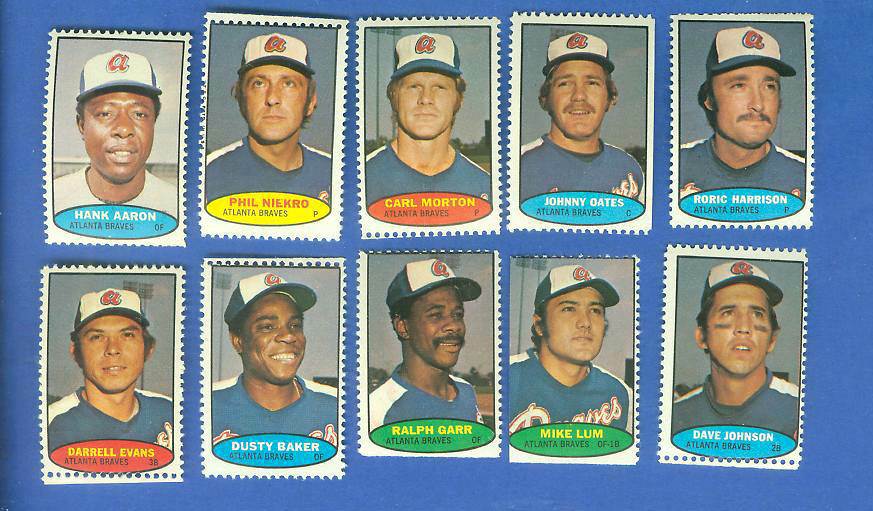| FREE |  |
(10) NM/MINT Vintage Hall-of-Famers click for details |
 |
FREE |
| FREE |  |
(10) NM/MINT Vintage Hall-of-Famers click for details |
 |
FREE |
| USE BACK ARROW TO RETURN TO PRIOR PAGE |
Braves - 1974 Topps Stamps COMPLETE TEAM SET (10 stamps)Book = $ *BOOK* Price = $ 12.50 NM/MINT to EX/MINT HANK AARON,PHIL NIEKRO,Dusty Baker,Darrell Evans,Ralph Garr,Roric Harrison,Dave Johnson,Lum,Carl Morton,Johnny Oates |

|
|
Below are short bits & pieces on sportscard & baseball trading card collecting. Please wander around the website for more info, prices, values & images on vintage baseball, football, basketball, hockey, sport and non-sports cards. 



Baseball card collecting terms (part G)
Grade/Condition Centering, corner wear, photo clarity, edges, creases, print flaws ... all combine to determine a card's condition or grade. Along with rarity/scarcity it is the major factor in a card's value. Graded Card As values increased the condition of cards and the determination of fakes and alterations became increasingly more important. Various companies became "graders" of your cards. For a fee they would grade your card (usually on a 1 to 10 scale) and then placed in a sealed plastic holder with labelling of the vital information. From past experiences, most people are NOT HAPPY with the grades they receive. To keep values up, graders can be extremely picky. Things you don't see, they do so don't be surprized when the NEAR MINT card you send in ends up with an EX or EX/MINT grade. There are TOO many grading companies - if you do, do choose carefully. PSA / SGC / GAI / BGS are some of the many companies. It is good to know that getting a card graded by a company that people do not recognize or respect will usually just cost you time and money and not help you in any way.
© 1995-2019 "InterNet's Baseball Card Store" / Joseph Juhasz ... All Rights Reserved |